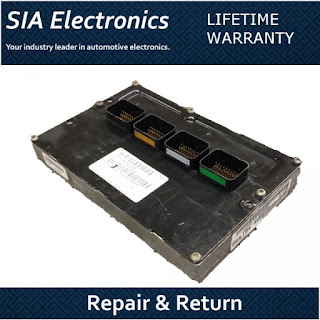Why the life of Automotive Electronic Control Modules Varies?
As technology continues to evolve
and change, the way we operate and operate our vehicles is evolving. It appears
that more and more components rely on computers, sensors, and capacitors.
Examples of these technological advances are ECM or electronic control modules
(engine control modules) or power train control modules. Many factors affect
life expectancy.
Build Quality-
As with the vehicle itself, the
quality of manufacture of electronic control modules varies greatly, which in
turn affects the useful life of the part. Some manufacturers use inferior
components and install the circuit board into plastic housings. This is done to
save costs and reduce the weight of the module. As a result, the life of the
control module may be shortened.
External Factors That Affect the Lifespan-
Placement-
Electronic Control Module when
exposed to components in the engine compartment, the module is placed in the
vehicle to extend the life of the ECM; extreme heat, corrosive moisture, and
moisture can adversely affect the electronic control module. Exposed wires,
plugs and adapters also appetize mice and other rodents! Automotive Electronic Control Modules
in the trunk are also exposed to overheating, exposing leads, plugs, and
adapters several times.
The BCM or Body Control Module
(also known as GEM Module (General Electric Module) and Multi-Function Module)
are usually located inside the vehicle; they can be under the dashboard, under
the seat, or inside the floor. On the surface, all the components are safe
except for heat, which is usually made of cheap plastic and is not very
durable. However, similar components, the front control module is located in the
engine compartment. Compared to other types of modules, low-quality houses and
combinations exposed to high temperatures can result in an increase in the
number of these types of Automotive Electronic Control Modules that require repair or replacement.
The TCM or transmission control
module is almost always exposed, sometimes inside the PCM of the engine
compartment or connected to the transmission.


Comments
Post a Comment